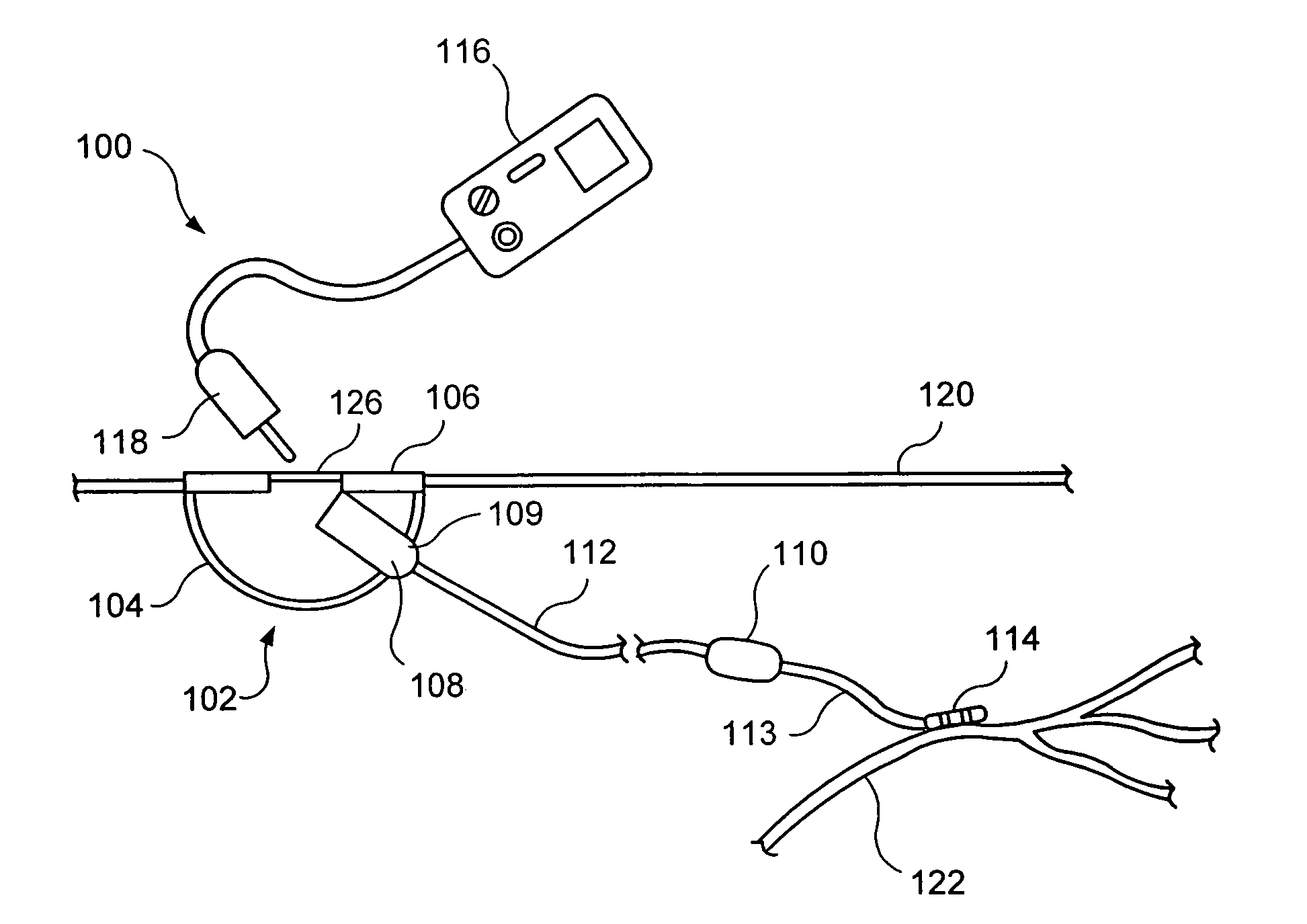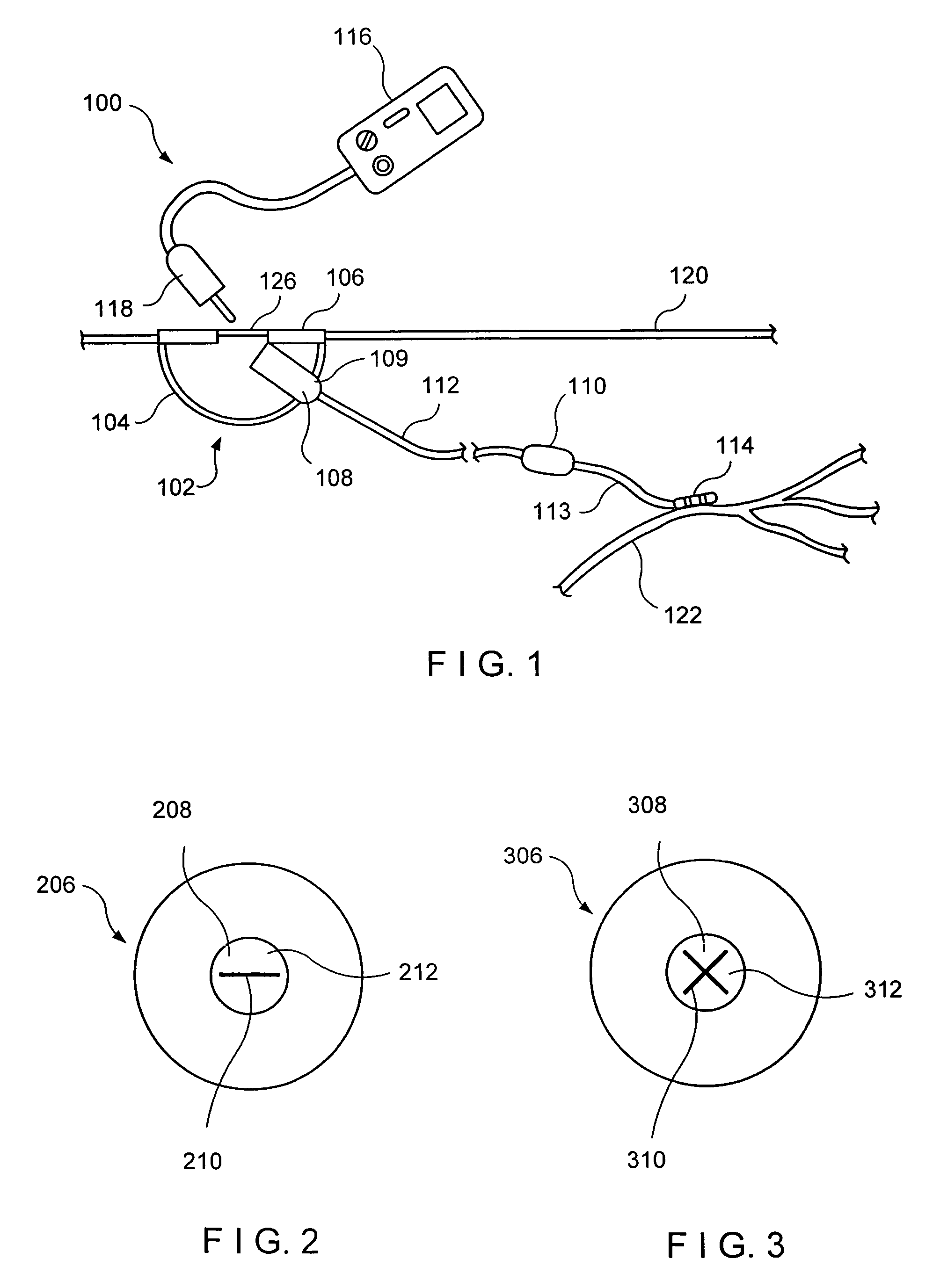Percutaneous access for neuromodulation procedures
a neuromodulation and percutaneous access technology, applied in the direction of spinal electrodes, coupling device connections, therapy, etc., can solve the problems of increasing the likelihood of infection and other negative reactions, limiting the ability of neuromodulation systems to operate over extended periods of time, and requiring devices to operate beyond the life span
- Summary
- Abstract
- Description
- Claims
- Application Information
AI Technical Summary
Benefits of technology
Problems solved by technology
Method used
Image
Examples
Embodiment Construction
[0009]The present invention may be further understood with reference to the following description and the appended drawings, wherein like elements are referred to with the same reference numerals. The present invention relates to devices used to block nerve signals and to stimulate selected nerves. In particular, the present invention relates to nerve stimulation devices comprising a first implanted portion and a second external portion connected to the implanted portion through an implanted connection port.
[0010]As described above, a variety of medical disorders are now treated via neuromodulation (i.e., the application of electrical stimuli to a targeted nerve or bundle of nerves). The stimulation may be designed to interfere with the electrical activity of the target nerves by blocking it, or by applying different electrical signals to the nerve(s). As would be understood by those skilled in the art, such procedures may be employed to treat a variety of ailments including, for ex...
PUM
 Login to View More
Login to View More Abstract
Description
Claims
Application Information
 Login to View More
Login to View More - R&D
- Intellectual Property
- Life Sciences
- Materials
- Tech Scout
- Unparalleled Data Quality
- Higher Quality Content
- 60% Fewer Hallucinations
Browse by: Latest US Patents, China's latest patents, Technical Efficacy Thesaurus, Application Domain, Technology Topic, Popular Technical Reports.
© 2025 PatSnap. All rights reserved.Legal|Privacy policy|Modern Slavery Act Transparency Statement|Sitemap|About US| Contact US: help@patsnap.com


